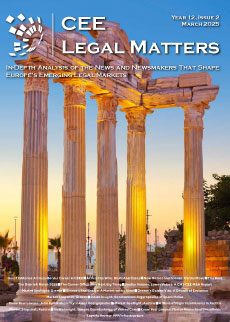Despite a still-shaky business environment in the Adriatic region we have again experienced another very exciting year, which once made our transaction teams busier than they were the year before.
In general, the South-East Europe (SEE) region is interesting for foreign investors mostly due to ongoing ultra-low interest rates, undervalued attractive targets, and unconsolidated markets. The biggest sell-side drivers of M&A activity in SEE continue to be distressed companies and non-core assets sales. The current trend of private-to-private business transactions and NPL transactions – both portfolio and single deals – will definitely continue in 2017, whereas privatization of companies of any significant size, unless they are distressed, is unlikely. Looking into the future, economic relations between Croatia and Slovenia could worsen slightly as a result of a significant arbitration between the two that is expected to conclude in 2017.
Slovenia: While two significant privatizations (those of car part supplier CIMOS and hygienic paper product manufacturer Paloma) succeeded, what was scheduled to be the biggest and most important sale process – that of Slovenia’s largest bank, NLB – is still in process. The major challenge for the Slovenian government in 2017 thus remains the privatization of state-controlled banks, the 100% state-owned NLB, and merged entity Abanka / Banka Celje. According to the commitments made by Slovenia to the European Commission, the state’s stake in NLB has to be reduced to 25%, while the merged bank has to be sold entirely. These plans would bring significant change to the Slovenian banking landscape, which is already undergoing consolidation. The sale of Unior, currently the largest Slovenian privatization being planned, will most probably be triggered in the first half of 2017, as will Slovenia’s biggest-ever railroad investment project (the so-called “Second Track,” with an estimated value of over EUR 1.4 billion).
Banks’ de-leveraging, primarily with respect to corporate sector and tightening capital requirements, resulted in numerous NPL transactions, the largest of which was the sale of NLB’s EUR 900 million portfolio, while the sale of NKBM’s EUR 250 million portfolio has been stopped.
Looking back, the highlight of 2016 was the numerous successful and high valued NPL transactions, while the biggest setback would be the low realization of the privatization strategic plan that was accepted in the beginning of the year. Overall, Slovenian economic growth and the country’s sovereign rating are consistently improving and seem likely to continue to do so.
Croatia: Notwithstanding a period of continued political instability in 2016, a gradual albeit slow recovery has appeared in the Croatian economy, moderately boosted by increased exports, intense tourism activity, and expected improvement in the country’s absorption of EU funds. The banking sector was positively affected by a recent decrease in the average NPL ratio, which peaked at 15% in June but also suffered a negative impact of the Swiss franc loan conversion.
The new Croatian government installed after the mid-September elections has adopted a hands-on approach and has already proposed a wide-scope tax reform, anticipated to take effect as of January 1, 2017. This reform entails, inter alia, a reduction of the corporate income tax to 18% for large enterprises and 12% for SMEs, an increase in the tax-free allowance for personal income tax, and a reduction of the VAT rate. Introduction of a tax on real estate ownership is envisaged for 2018. Privatization of state-owned assets largely depends on the directives of the newly established Ministry for State Assets. We find interesting and spotlight-worthy the Adris Group’s publicly expressed intention to consolidate the insurance business in the region by means of a competitive takeover of Sava Re.
Serbia: In 2016 the value of foreign investments in Serbia reached EUR 1.25 billion, which is about 8.5% more than last year, and it is expected to be around EUR 1.9 billion in 2017. The Serbian government successfully sold the country’s sole steel producer – Zelezara Smederevo – to China’s Hebei Iron and Steel, although the long-awaited privatization of Telekom Serbia, Serbia’s largest operator, has failed, as Serbia’s government rejected all offers on the table. In 2017 it is anticipated that Serbia’s government will start the privatization of several state-owned companies from the banking, telecommunication, and insurance sectors.
The infrastructure projects planned throughout Serbia should boost the economy and produce substantial work for local companies. Indeed, the highway section from Ljig to Preljina in central Serbia, worth EUR 308 million, was already built in the second half of 2016, and the Belgrade waterfront project, worth over EUR 3.5 billion and initiated in 2014 between Eagle Hills from the UAE and the Serbian government, is already helping the Serbian economy.
The continued rise of NPLs resulted in the adoption of the NPL Resolution Strategy 2015 and commitment to various policy reforms under the IMF standby arrangement. As for legislation, a new Enforcement and Security law entered into force aimed at better controlling debtors, while work on the new Civil Code continues.
Montenegro: Foreign direct investments in Montenegro at the beginning of 2016 amounted to EUR 223 million – an increase of over 100% from the same period in 2015. Looking forward to 2017, we expect that Montenegro will remain a magnet for investments because of its business-oriented economic system. The privatization of the New Tobacco Plant was successfully completed in the first half of 2016, and the Bar-Boljare Highway Project – a key infrastructure highway project led by the Ministry of Transportation and Maritime Affairs – is on schedule. After its construction, the highway will be incorporated into the international road network connecting several countries in Central Europe. As the Bar-Boljare Highway Project, worth EUR 2 billion, is the largest infrastructure project in Montenegro, it will continue to keep local companies busy in the upcoming year as well.
Macedonia: Affected by a decline in investment (affected largely by significant political uncertainties), growth in Macedonia is expected to slow to 2% in 2016 but recover gradually to 3.7% in 2018, backed by strong export performance (mainly from technological industrial development zones) and infrastructure investment.
Consumption remained the main driver of growth, supported by stable employment and higher public wages and transfers. Indeed, Macedonia continues to score highly on international rankings of ease of doing business and low tax burden. The World Bank Doing Business 2016 report ranks Macedonia 12th out of 189 economies, far higher than many other EU and neighboring countries. In 2015, the country’s Commercial Law was amended to reinforce minority shareholder rights, improve corporate governance, and increase the transparency of financial results reporting. As the quality of legislation is improving, the focus is on building institutions capable of ensuring effective implementation of the legislation.
Bosnia and Herzegovina: In the first quarter of 2016, foreign direct investment in BiH amounted to BAM 145.3 million, compared to the BAM 22.5 million in Q1 2015 investments. The biggest investments this year were in the energy sector, including the signing of several contracts regarding the construction of electric power facilities.
Although according to the country’s Privatization Plan for 2016 six state-owned companies were expected to be privatized, only two privatizations were realized: the sales of Fabrika Duhana Sarajevo d.d. Sarajevo and of Bosnalijek d.d. Sarajevo. In 2017 it is anticipated that the BiH government will finally start the privatization of state-owned companies from the telecommunication sector.
It is expected that the foreign direct investments in 2017 should increase by about 0.2% over this year’s results.

















